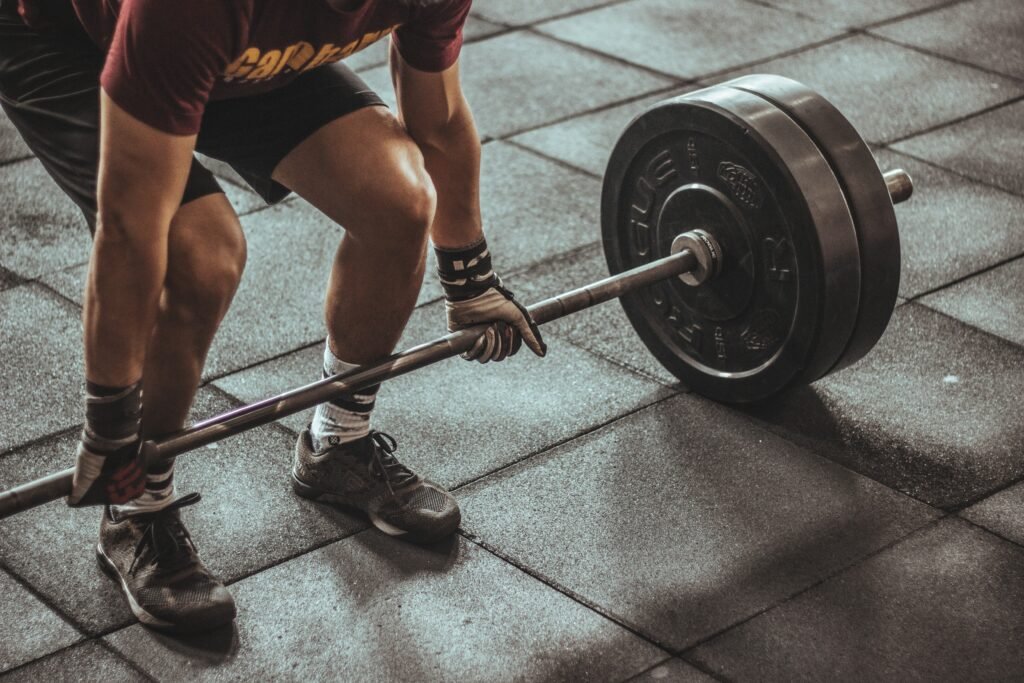The deadlift is one of the most effective exercises for developing total body strength and power. It targets multiple muscle groups, including the hamstrings, glutes, lower back, and grip strength. However, there are different ways to perform the deadlift, and one of the most important aspects of the lift is the stance.
The stance in the deadlift refers to the position of the feet and the distance between them. There are three main stances for the deadlift: conventional, sumo, and hybrid. Each of these stances has its own advantages and disadvantages, and choosing the right one depends on your body type, mobility, and personal preference.
Conventional Deadlift Stance
The conventional deadlift stance is the most common and the one most people are familiar with. In this stance, the feet are shoulder-width apart, and the toes are pointed forward or slightly outward. The hands are placed outside the legs, and the grip is usually double overhand or mixed grip.
The conventional deadlift stance is a great option for those with long arms and a strong lower back. It allows for a greater range of motion and a more natural pulling position, making it easier to engage the hamstrings and glutes. However, it can be more difficult for those with shorter arms or limited mobility, as the range of motion can be restricted.
Sumo Deadlift Stance
The sumo deadlift stance is a variation of the deadlift where the feet are positioned wider than shoulder-width apart, and the toes are pointed outward at an angle of around 45 degrees. The hands are placed inside the legs, and the grip is usually double overhand or hook grip.
The sumo deadlift stance is a great option for those with shorter arms or limited mobility, as it allows for a shorter range of motion and less stress on the lower back. It also places more emphasis on the quads and inner thighs, making it a great option for powerlifters or those looking to increase their squat strength. However, it can be more challenging for those with weak adductors or hip mobility issues.
Hybrid Deadlift Stance
The hybrid deadlift stance is a combination of the conventional and sumo deadlift stances. In this stance, the feet are positioned wider than shoulder-width apart, but not as wide as in the sumo stance. The toes are pointed slightly outward, and the hands are placed outside the legs.
The hybrid deadlift stance is a great option for those who have mobility issues or struggle with the range of motion in the conventional deadlift. It allows for a shorter range of motion while still engaging the hamstrings and glutes, making it a great option for bodybuilders or those looking to improve their physique. However, it may not be the best option for powerlifters or those looking to increase their one-rep max.
Choosing the Right Deadlift Stance
Choosing the right deadlift stance depends on your individual goals, body type, and mobility. Here are some factors to consider when choosing your deadlift stance:
Body Type
Your body type can play a significant role in determining the best deadlift stance for you. Those with long arms and a strong lower back may prefer the conventional deadlift stance, while those with shorter arms or limited mobility may prefer the sumo stance.
Mobility
Mobility is another crucial factor to consider when choosing your deadlift stance. If you have limited mobility or struggle with the range of motion in the conventional deadlift, the sumo or hybrid stances may be a better option.
Goals
Your goals will also play a role in determining the best deadlift stance for you. If you are a powerlifter looking to increase your one-rep max, the sumo deadlift stance may be the best option. If you are a bodybuilder looking to develop your physique, the conventional or hybrid deadlift stance may be a better option.
Training History
Your training history can also affect your choice of deadlift stance. If you are new to deadlifting, it may be best to start with the conventional deadlift stance and gradually work your way up to the sumo or hybrid stances.
Experimentation
Finally, experimentation is key when it comes to finding the right deadlift stance for you. It may take some trial and error to determine which stance feels most comfortable and effective for your body.
Tips for Proper Deadlift Stance Execution
Once you have determined the best deadlift stance for you, it is important to execute it properly to avoid injury and maximize results. Here are some tips for proper deadlift stance execution:
- Begin by standing with your feet shoulder-width apart (conventional stance) or wider than shoulder-width apart (sumo or hybrid stance).
- Position your toes so that they are pointed forward or slightly outward (conventional stance) or at an angle of around 45 degrees (sumo or hybrid stance).
- Place your hands outside your legs (conventional or hybrid stance) or inside your legs (sumo stance).
- Keep your back straight and your chest up throughout the lift.
- Engage your core and squeeze your glutes as you lift the weight.
- Keep the bar close to your body throughout the lift.
- Lower the weight back down to the ground with control, keeping your back straight and your chest up.
- Take a brief rest between reps to reset your stance and ensure proper form.
Conclusion
The deadlift is a powerful exercise for developing total body strength and power. The stance in the deadlift is a crucial aspect of the lift and can determine the effectiveness of the exercise for your individual goals and body type. By considering factors such as body type, mobility, goals, training history, and experimentation, you can determine the best deadlift stance for you and execute it properly to maximize results and minimize injury.





